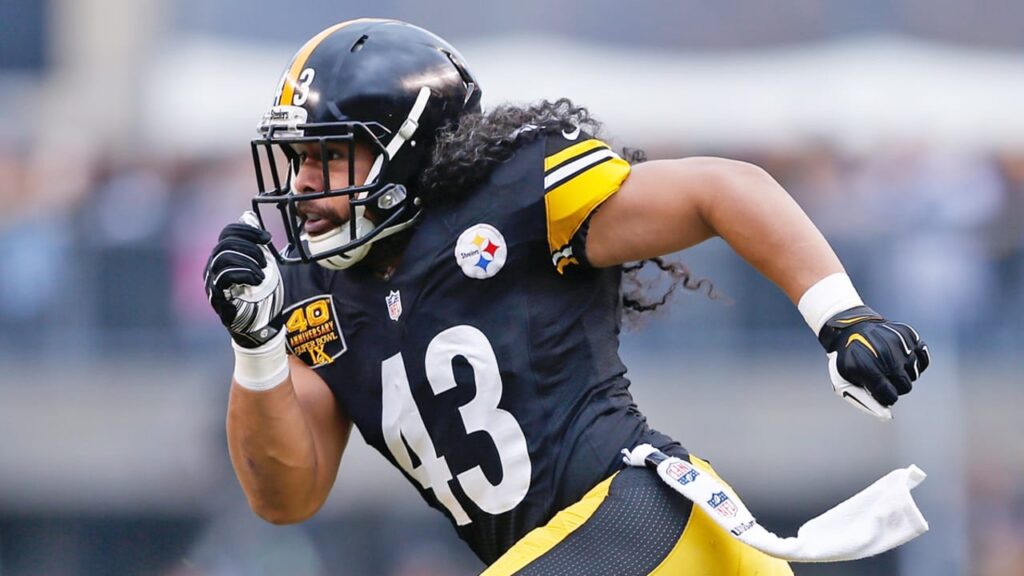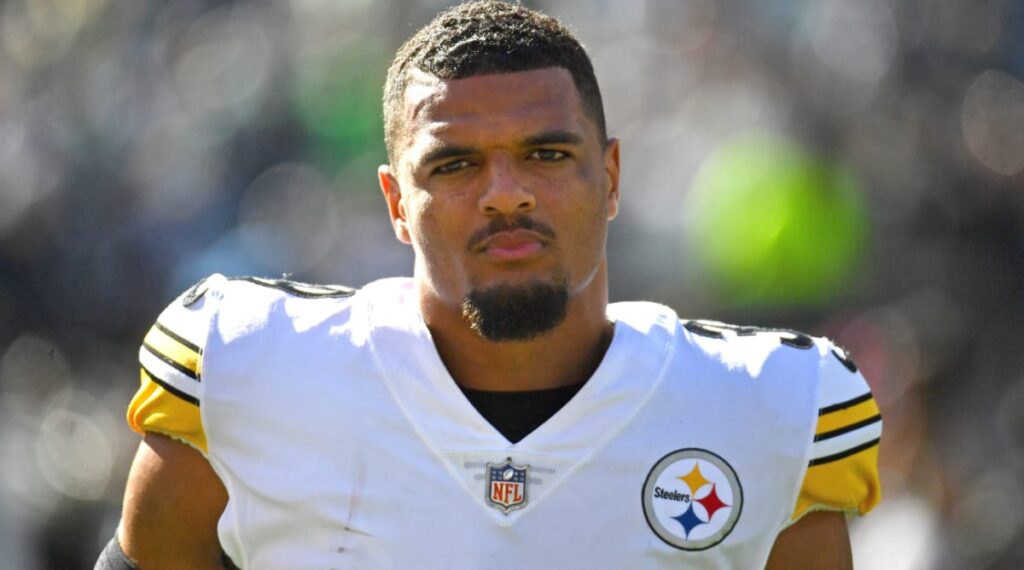What is a Safety in the NFL? – NFL Safety Explained
The term “safety” has a dual meaning in the NFL as both a defensive position and a type of score. In this article, I’ll discuss both meanings to help provide more context when you hear the term referenced the next time you watch a game.
A Safety Score In Football
A safety score is worth two points and occurs when the offense commits a foul in their own end zone, or when the ball carrier is tackled or forced out of bounds in their end zone. After a safety, the team that was scored on must put the ball in play with a free kick from their 20-yard line.
How Does a Team Score a Safety…..
- Tackle: The defense tackles the ball carrier in the offense’s end zone
- Fumble: The offense fumbles the ball out of its end zone
- Penalty: The offense commits a penalty in its own end zone

To signal a safety score by the defensive team the referee puts his palms together above his head. Look for this signal whenever the offense is operating near its own goal line with the quarterback and running backs lined up in the end zone.
Safety, Defensive Position
Football fans know the importance of a strong offense that can move the ball and score points. But the backbone of any great team is its defense. And at the heart of that defense are the safeties – the last line of protection against the big play. After all, it’s good defenses that win championships.
What are the responsibilities of a safety?
DO NOT let ball carriers pass.
When covering receivers, prevent opposition from going behind.
When covering running plays, tackle ball carrier or force them to move horizontally.
What Does an NFL Safety Do in Football?
Safeties have some of the most crucial and wide-ranging responsibilities on the field. They defend against both the run and the pass. When the offense throws deep, safeties provide over-the-top coverage to prevent long completions. This includes playing deep zone coverage or man-to-man on tight ends and slot receivers.
Safeties don’t just cover passes, they support the run defense by filling gaps along the line and making open-field tackles. Before the snap, they read the offense’s formation and motion to diagnose the play. Then they communicate adjustments to the rest of the defense.
Safeties are often called the “quarterbacks of the secondary.” They oversee the defensive backfield, ensuring everyone is lined up properly. During the play, they call out coverages and adjustments on the fly. Their leadership and communication bind the entire defense into a cohesive unit.

Impact on the Team
Having a strong safety presence is vital for any football team. Safeties prevent big plays that can swing momentum and break open a game. Their versatility allows defenses to adapt to different offensive schemes.
Safeties are also critical for limiting yards after the catch. With their strong tackling ability, they bring down receivers quickly. And their pre-snap reads and in-play adjustments enable the whole defense to play faster and more effectively.
Safeties vs. Cornerbacks
While safeties patrol the deep areas of the field, cornerbacks typically line up closer to the sidelines. Cornerbacks are primarily responsible for covering the offense’s wide receivers man-to-man.
Safeties, on the other hand, have more varied duties in both pass coverage and run defense. They need a blend of size, strength, and athleticism to handle those different roles effectively. While cornerbacks rely more on pure speed and agility.

Types of Safeties
There are two main types of safeties in football:
Strong Safety: The “strong” safety plays nearer to the line of scrimmage. They are usually bigger and more physical, focused on stopping the run and covering tight ends.
Free Safety: The “free” safety covers more ground, playing a centerfield role in the deep passing game. They need great athleticism and ball skills to be a team’s last line of defense.
Who Plays Safety In the NFL ?
Great safeties like Ronnie Lott, Ed Reed, and Troy Polamalu have left an indelible mark on NFL history. The highest paid safeties in the NFL are Minkah Fitzpatrick and Antoine Winfield Jr. , reflecting their value in the current landscape of the NFL.
A few other notable safeties:
- Jessie Bates III (ATL)
- Jevon Holland (MIA)
- Jordan Battle (CIN)
- Ronnie Hickman Jr ( CLE)
- Qunadre Diggs (SEA)
Fore the full list of “graded” current NFL safeties from PFF.com – CLICK HERE

